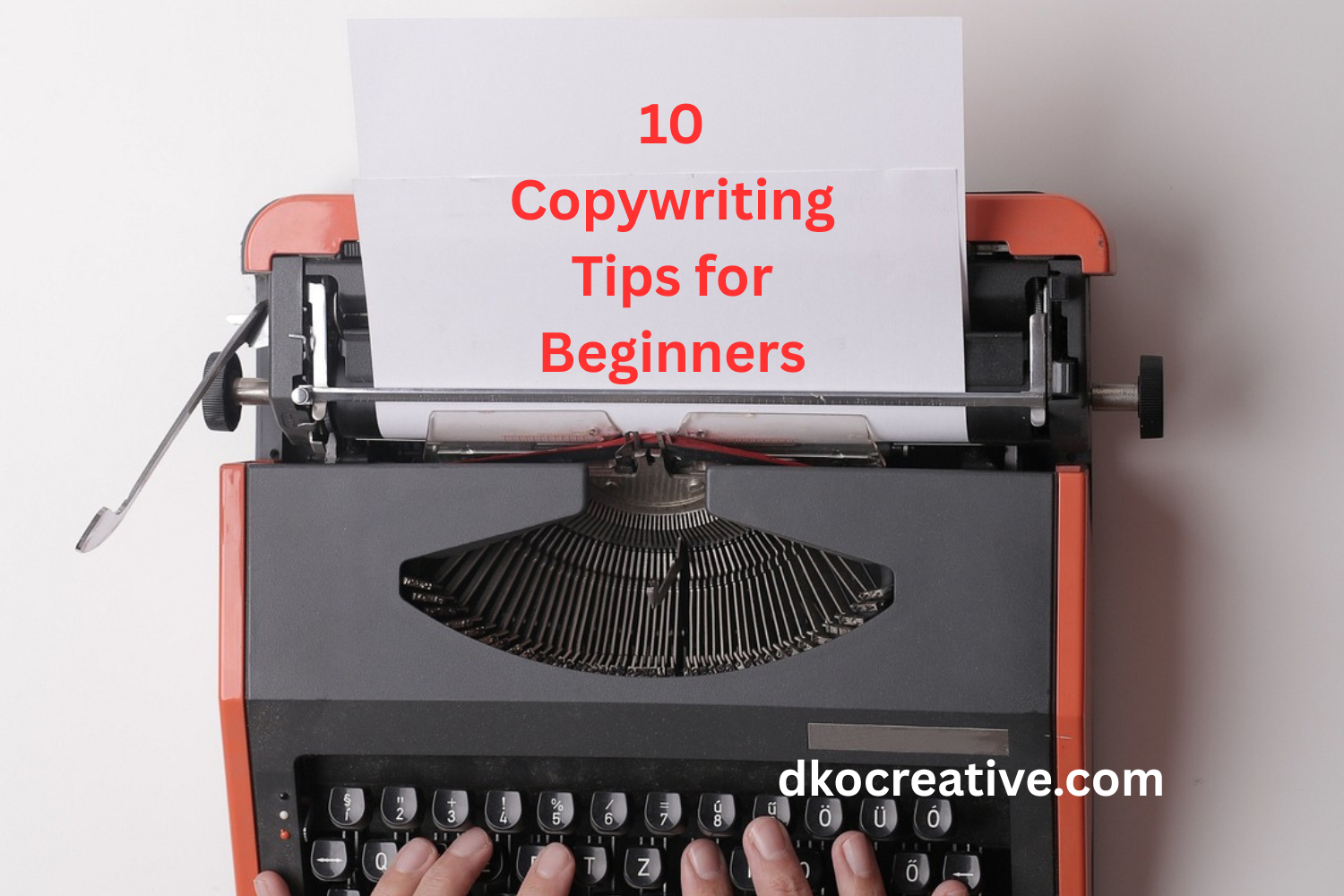If you’re aiming to grow an email list, sell products, or simply build trust online, you don’t need to overcomplicate things. Focusing on a few proven strategies helps you stand out while saving time and hassle. These copywriting tips aren’t just for the pros; anyone can use them, and they will make a noticeable difference to your customer and client engagement..
Here I’m sharing 10 copywriting tips that are especially helpful if you’re new to the game or running a small business. Each tip comes with practical steps you can use, whether you’re writing web pages, social posts, or email newsletters.

1. Know Your Audience Inside Out
Understanding your audience is at the heart of great copy. I write about it in all of my articles. If you don’t resonate with your audience then you are wasting your time. Instead of trying to please everyone, focus your message on the people most likely to benefit from your product or service. This means getting clear on their needs, struggles, and goals.
- Chat with real customers or check out testimonials and reviews to spot common questions or objections.
- Even a quick survey or social poll brings valuable insights into what matters most to your readers.
- Address people in a way that shows you “get” them. This helps you build trust quickly.
When you write with a specific reader in mind, your copy feels personal and much more convincing. Remember, learning about your ideal customer is ongoing; trends, preferences, and expectations can shift over time.
Schedule regular check-ins with your audience to keep your copy fresh and relevant.

2. Focus on Benefits, Not Just Features
Features tell what your product or service does, but benefits explain why those features matter to the reader. If you only list specs and details, people could lose interest. Point out how your offer solves their problems or makes life easier.
- Write down a feature, then ask yourself, “So what?” Keep answering until you reach the benefit that really matters.
- For example, “24-hour delivery” becomes “Get what you need, right when you need it.”
Turning features into clear benefits makes your offer stronger and gets people emotionally invested. Make sure to always connect facts with feelings; when people see the positive impact on their lives, they’re much more likely to act.
3. Write with Clarity and Simplicity
Simple, straightforward writing is usually the most effective. Too much jargon or fancy words only creates confusion. Even if the topic is complex, break it down into bite-sized, easy to grasp statements.
- Use short sentences and paragraphs. If you can say it with fewer words, go for it.
- Stick to common words. Instead of “use,” just say “use.”
Your readers are busy, so keeping things clear and simple is really important. Try testing your copy with someone unfamiliar with your business; if they get the gist right away, you’re on the right track.

4. Nail Your Headline (It’s More Important Than You Think)
The headline is the first thing people see, and it often decides whether they’ll keep reading. Make it interesting and directly related to a benefit or solution your audience wants.
- Use specific language; “Boost Your Website Traffic By 50%” is more enticing than “Learn About SEO.”
- Ask questions or use numbers to grab attention.
A great headline sets up expectations and encourages people to read the rest of your message. Refresh your headline regularly if you notice a dip in engagement; new wording can revive interest.
Join my FREE weekly email series of tips and hints to help you with your content, writing Ads, copy, etc, and get your FREE Downloadable E-Book on ‘How to Write Content for Your Business’
5. Use a Friendly, Conversational Tone
People prefer to do business with brands that feel down to earth, not robotic or stuffy. Write as if you’re talking to a new friend. This relaxed style breaks down barriers and makes your message more relatable.
- Use “you” to speak directly to the reader, and “I” or “we” for a more personal connection.
- Read your copy out loud to see if it sounds natural. If it feels weird to say, try reworking it.
When people feel like you’re speaking with them, not at them, you build trust and stand out. Humor, honesty, and warmth go a long way in making your words memorable.

6. Add a Clear and Compelling Call to Action (CTA)
Every piece of copy needs a next step. Tell readers clearly what you want them to do, and make it feel rewarding or low-pressure.
- “Download your free guide” or “Start your 30-day trial” are both specific and actionable.
- Aim for one main CTA per page or message to avoid confusion.
A good call to action moves people forward in your funnel, whether it’s subscribing, purchasing, or simply learning more. Change up your CTA on occasion to see which wording drives better results. Give your readers a reason to say yes without feeling pressured.

7. Address Common Objections Upfront
If your readers have doubts, don’t ignore them. The best copy acknowledges worries and offers reassurance before they become deal breakers.
- Think about what might hold someone back from buying: price, trust, or results.
- Add social proof like reviews, testimonials, or real results to put readers at ease.
It’s easier to win people over when you show you understand their concerns and have solutions ready. If you get frequent questions, don’t hide them—turn them into an FAQ section or include reassuring answers right where doubts might arise.
8. Keep It Scannable with Formatting
Most readers skim before deciding to get into the details. Make your copy easy to scan with clear subheadings, bullet points, and plenty of white space.
- Break longer sections into shorter paragraphs or lists.
- Use bold or italics to highlight keywords, but don’t overdue it.
Scannable content draws the eye in and encourages deeper reading. Try formatting your most important information so it jumps off the page even for skimmers. Remember, online readers have short attention spans, so help them pick up key ideas quickly.

9. Edit Ruthlessly (Cut the Fluff)
No one loves reading extra words that don’t add value. Strong editing turns a decent message into a great one.
- Read your draft out loud and cut anything that feels repetitive or irrelevant.
- Watch for filler words like “very,” “just,” or “actually.” Most of the time, they’re not needed.
The more focused your writing, the bigger the impact. After your initial edit, step away from your work and return later with fresh eyes—sometimes that’s all it takes to spot what needs tightening up.

10. Test, Tweak, and Learn From Results
Effective copywriting improves over time. Don’t be afraid to test different headlines, CTAs, or openings; sometimes a small tweak makes a big difference.
- Use tools like Google Analytics or AB testing platforms to see what’s working.
- Pay attention to open rates, clicks, or sales, and then use that feedback to improve your next piece of copy.
Continual improvement helps your copy become more effective and keeps your messaging fresh. Try documenting what works well in a swipe file—having examples makes future writing sessions easier and even more productive.
Boosting Your Copywriting Confidence
Copywriting isn’t about being perfect from the start. It’s all about understanding your reader and helping them take the next step, one message at a time. Building your skills takes practice; as you put these strategies to work, your writing will feel more natural and achieve better results.
The small wins add up, and every email, web page, or post is a chance to step up your copywriting game. If you’re feeling stuck, check out successful campaigns in your industry or ask a friend for feedback. Learning from others, trying new things, and reflecting on what resonates with your audience will set your growth in motion.
Thanks for reading, You can join my FREE weekly email series of tips and hints to help you with your content, writing Ads, copy, etc, and get your FREE Downloadable E-Book on ‘How to Write Content for Your Business’ which covers things like:
- The 4 Types of Content You Need
- Templates You can Use
- The 10 Minute Content Creation Formula
